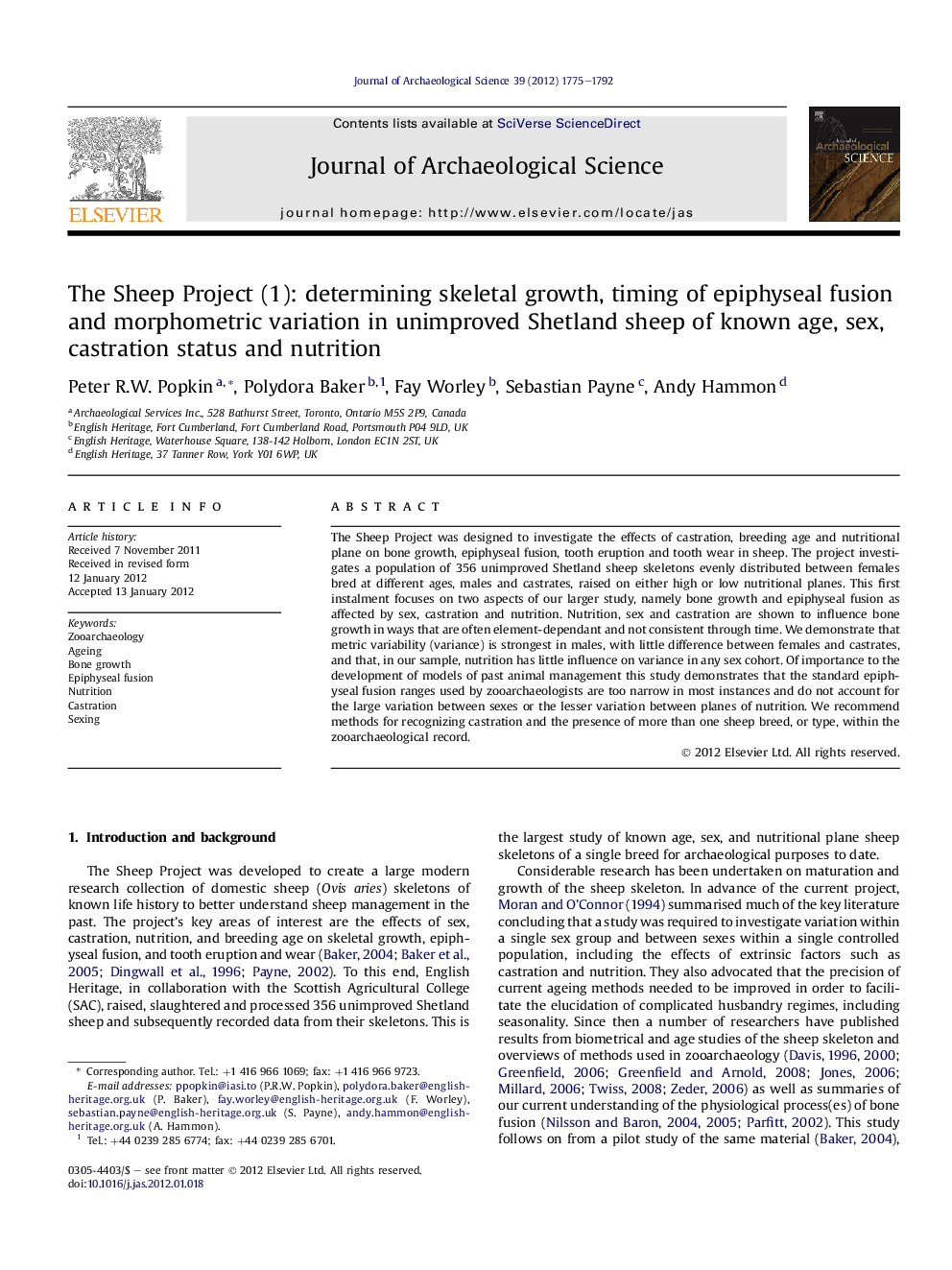| Article ID | Journal | Published Year | Pages | File Type |
|---|---|---|---|---|
| 1035682 | Journal of Archaeological Science | 2012 | 18 Pages |
The Sheep Project was designed to investigate the effects of castration, breeding age and nutritional plane on bone growth, epiphyseal fusion, tooth eruption and tooth wear in sheep. The project investigates a population of 356 unimproved Shetland sheep skeletons evenly distributed between females bred at different ages, males and castrates, raised on either high or low nutritional planes. This first instalment focuses on two aspects of our larger study, namely bone growth and epiphyseal fusion as affected by sex, castration and nutrition. Nutrition, sex and castration are shown to influence bone growth in ways that are often element-dependant and not consistent through time. We demonstrate that metric variability (variance) is strongest in males, with little difference between females and castrates, and that, in our sample, nutrition has little influence on variance in any sex cohort. Of importance to the development of models of past animal management this study demonstrates that the standard epiphyseal fusion ranges used by zooarchaeologists are too narrow in most instances and do not account for the large variation between sexes or the lesser variation between planes of nutrition. We recommend methods for recognizing castration and the presence of more than one sheep breed, or type, within the zooarchaeological record.
► 356 Shetland sheep skeletons of known age, sex and plane of nutrition examined. ► Castration effects bone fusion timing more significantly than sex or nutrition. ► Sex is a stronger influence on skeletal growth than nutrition or castration. ► Age at death range determined by fusion state is broader than previously thought. ► Longitudinal bone growth ceases prior to epiphyseal fusion.
